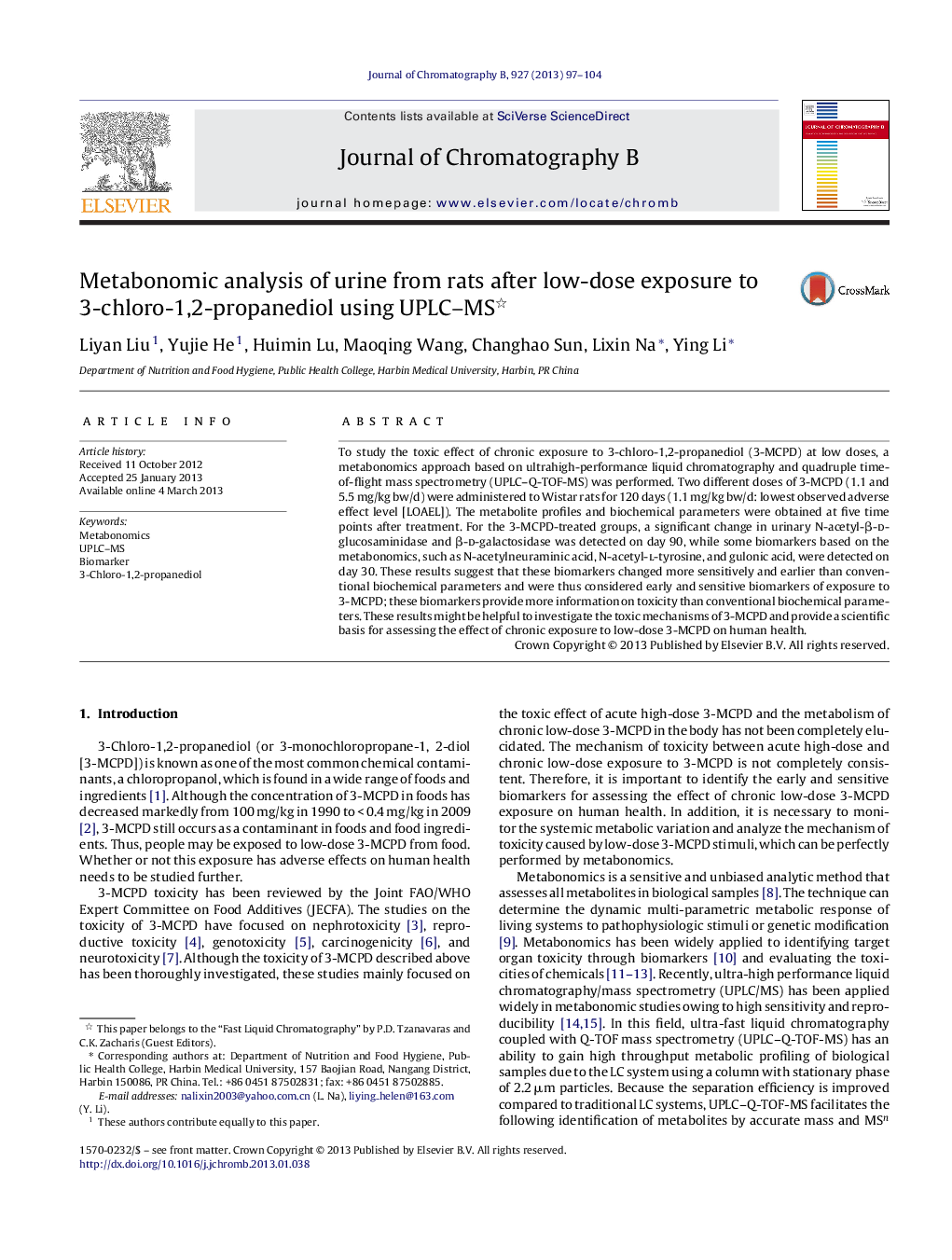| Article ID | Journal | Published Year | Pages | File Type |
|---|---|---|---|---|
| 1213094 | Journal of Chromatography B | 2013 | 8 Pages |
To study the toxic effect of chronic exposure to 3-chloro-1,2-propanediol (3-MCPD) at low doses, a metabonomics approach based on ultrahigh-performance liquid chromatography and quadruple time-of-flight mass spectrometry (UPLC–Q-TOF-MS) was performed. Two different doses of 3-MCPD (1.1 and 5.5 mg/kg bw/d) were administered to Wistar rats for 120 days (1.1 mg/kg bw/d: lowest observed adverse effect level [LOAEL]). The metabolite profiles and biochemical parameters were obtained at five time points after treatment. For the 3-MCPD-treated groups, a significant change in urinary N-acetyl-β-d-glucosaminidase and β-d-galactosidase was detected on day 90, while some biomarkers based on the metabonomics, such as N-acetylneuraminic acid, N-acetyl-l-tyrosine, and gulonic acid, were detected on day 30. These results suggest that these biomarkers changed more sensitively and earlier than conventional biochemical parameters and were thus considered early and sensitive biomarkers of exposure to 3-MCPD; these biomarkers provide more information on toxicity than conventional biochemical parameters. These results might be helpful to investigate the toxic mechanisms of 3-MCPD and provide a scientific basis for assessing the effect of chronic exposure to low-dose 3-MCPD on human health.
► We studied metabolite profiles of the low-dosed exposure to 3-MCPD by metabolomics. ► We found a change in urinary NAG and GAL on 90 days after 3-MCPD treatment. ► Some biomarkers such as N-acetylneuraminic acid were detected on 30 days. ► These biomarkers changed more sensitively and early than conventional parameters.
